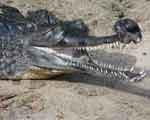Thanks to a new model created by an international research group it is now possible to predict which European countries are more likely to become united or which are more likely to break up. It does so by not only considering demographic and economic criteria but, most ingeniously of all, culture and genetics.
Southern Methodist University economist Shlomo Weber was a member of the team and co-author of the study that was published in the Journal of Economic Growth.
The scientists said their method quantitatively analyzes the stability and disintegration of European nations. It also estimates the implicit benefits of a larger European Union or, in other words, what would happen if the EU were one country. They also give empirical support for the use of genetics as an indicator of cultural heterogeneity amongst nations.
Besides Weber, other researchers included scientists from the Carlos III University of Madrid, the Toulouse School of Economics in France and the New Moscow School of Economics in Russia.
It has always been common knowledge that the more nations that join together in unity, the greater the profits, said Ignacio Ortuño Ortín, a researcher at the University of Madrid. This is because the market gets bigger and costs are shared. On the other hand, when many regions or countries are brought together there is a difference in populations, both economically and culturally. This, in turn, implies a high cost. There was a need for methodology that quantitatively analyzes these two aspects using specific cases.
Case study: Yugoslavia’s economic, cultural differences played role in instability
The mathematical model the researchers put forward includes factors such as a country’s wealth alongside size and cultural differences in terms of population genetics. According to the experts, the most difficult aspect to quantify when making predictions is the “measurement” of countries from a cultural point of view. “We take population genetics data and then use it to support the fact that such genetic distance between regions can be used as a good tool when approaching cultural distance,” Ortuño said.
According to the scientists, this does not suggest that genetics explains culture but that there is a correlation between the two. This means that populations that have intermixed more will also display greater cultural similarity. “We are not saying that genes explain the way a person thinks,” clarifies Ortuño.
In order to put consistency of their model to the test, a real-life case was chosen: the disintegration of Yugoslavia. The authors of the study found that the economic differences between its republics determined the order of disintegration – a fact that coincided with their model. Likewise, cultural differences, although small, played a key role in triggering instability.
Predictions for other countries
The model’s first theoretical predictions were made by pairing two countries based on the hypothetical situation of Europe being a single country and on the regions that are more prone to separate from their current nation.
If the European Union were to become stronger and had a common fiscal as well as monetary policy (both of which together would turn it into a single country), in the long run, Greece and Portugal would benefit the most. In terms of percentages, Portugal would benefit from an increase in wealth of 13 percent, Greece would see an increase of 11.9 percent, Ireland with 8.9 percent and Finland with 8 percent. Spain would see a growth of 4.1 percent whereas those countries that would benefit least would be Germany, followed by Italy and then France.
The researchers have also predicted what regions have more incentives to separate from the nations to which they belong. “We are not suggesting that it would be beneficial for these regions to separate but it is true that, in relative terms, the Basque Country and Scotland have more incentives,” they claim.
According to the model, those that are more inclined to pair up would be Austria and Switzerland, Denmark and Norway, and France and Great Britain. Spain would be more interested in uniting with France but “this does not necessarily mean that France would be interested in uniting with Spain,” says Ortuño. He adds that “we avoid taking the strategic decisions of countries into account. This means that our model predicts how much a country would benefit if a union were to occur.”
The team is currently working on a new project with collaborators in Moscow who are applying the same method to understand the stability of regions in Russia. — Spanish Foundation for Science and Technology
SMU is a nationally ranked private university in Dallas founded 100 years ago. Today, SMU enrolls nearly 11,000 students who benefit from the academic opportunities and international reach of seven degree-granting schools. For more information see www.smu.edu.
SMU has an uplink facility located on campus for live TV, radio, or online interviews. To speak with an SMU expert or book an SMU guest in the studio, call SMU News & Communications at 214-768-7650.


 SMU to help solve dangerous refugee water issues
SMU to help solve dangerous refugee water issues Anthropology researcher to study human-fire-climate interactions
Anthropology researcher to study human-fire-climate interactions





One reply on “A mathematical model determines which nations are more stable and which are more likely to break up”
[…] > Get the full story from the SMU Research blog […]